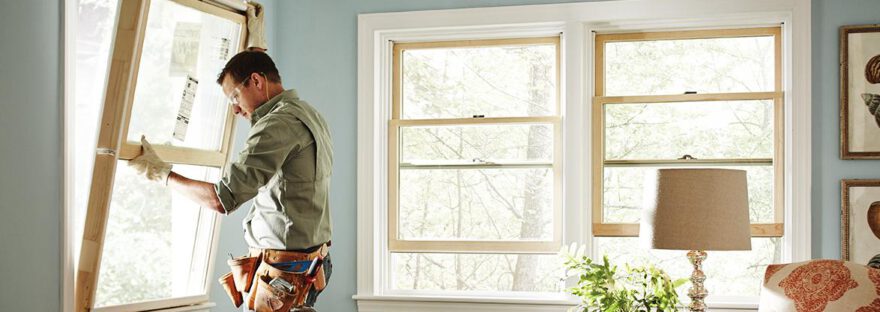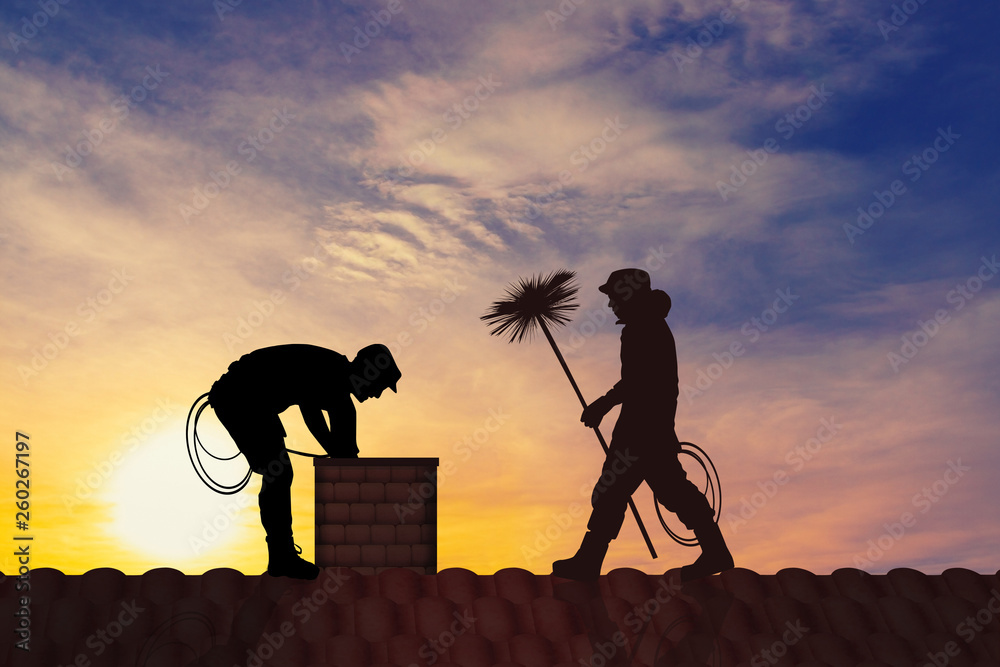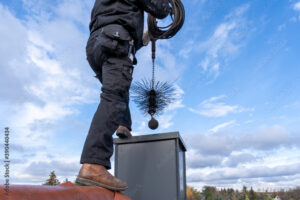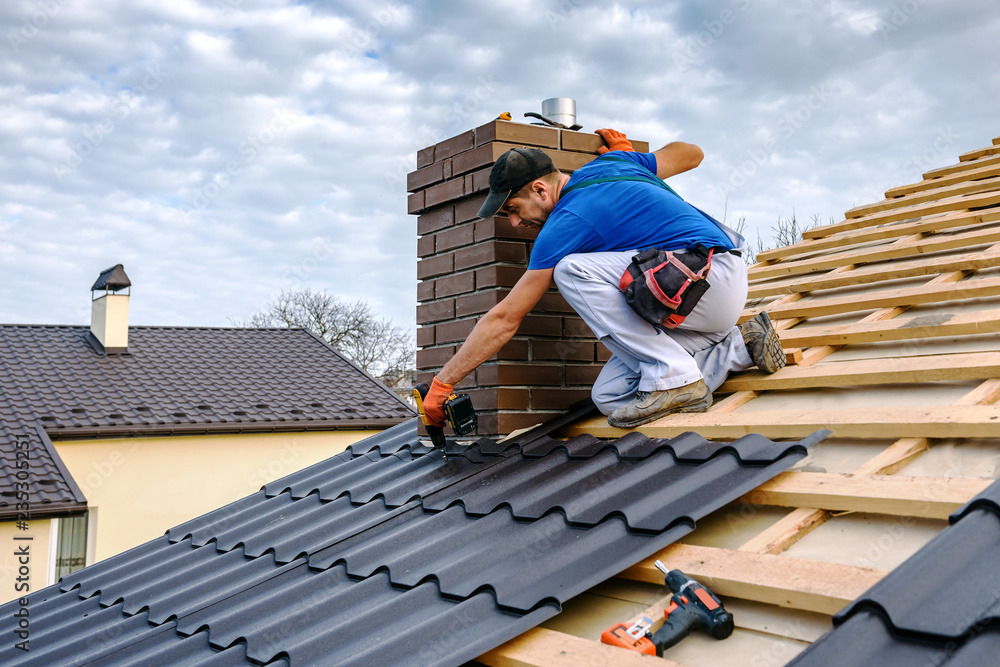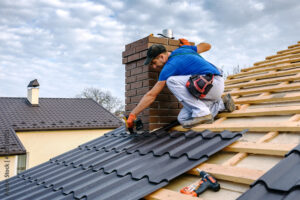Window Replacement Massachusetts is a relatively simple project requiring careful planning. Before starting, recruit a friend to help you carry the new window into place.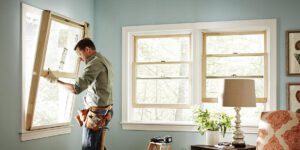
Set shims behind each pre-drilled screw hole to keep the window from bowing or pulling away from the jambs. Fill any gaps wider than 1/4 inch with a foam-rubber backer rod and caulk the area.
If you have a window frame with rotting wood, it will need to be replaced or repaired. A simple way to check for rot is to use a screwdriver and press into the corners of the frame. If the wood feels soft and spongy, it’s a sign that rot is present. In some cases, the rot will be so extensive that the entire frame needs to be replaced. If this is the case, calling a professional for window replacement is a good idea.
There are several different types of frames, including aluminum, vinyl, fiberglass, and traditional wooden frames. Each has its own set of advantages and disadvantages. The best choice for your home depends on the style of your house and your budget.
Aluminum frames cost between $200 and $500 and don’t require much maintenance. However, they aren’t very effective at insulating your home and can be susceptible to expanding and contracting in response to changing temperatures.
Composite frames are more durable than wood, but they can also be prone to damage and rot. Fortunately, they’re easy to repair and can last up to 50 years.
Another common problem with composite frames is broken seals and hardware components, which can be easily fixed by a professional. This is usually the result of an impact or weather event and typically doesn’t require a full replacement. Nevertheless, a professional will need to inspect your windows and determine the best course of action. They may recommend additional weatherstripping or sealing to create a more insulated seal. This will help to reduce drafts and energy loss. Alternatively, a professional can use spray foam to fill the gaps between the frames and the wall.
Glass
A cracked or damaged window pane not only looks bad but can also be a safety hazard. Depending on the extent of the damage, it may be necessary to replace the entire window or just the glass.
The glass itself can usually be repaired fairly easily. Small chips or smudges can be fixed with the appropriate paint and sanding to prevent moisture from seeping into the frame and causing further damage. The locking hardware can also be adjusted and lubricated to help with operation.
If the window is foggy or exhibiting condensation between the panes this could be a sign of a failed seal in the insulating glass unit (IGU). The IGU is made up of two or more panes of glass with an air gap between them that can be vacuum sealed or filled with an inert gas like argon or krypton to add additional energy efficiency. The seal failure can lead to condensation between the panes, or “blown windows” that can’t be repaired. If the window frame is still in good shape it might be possible to upgrade the IGU with a new insert.
The frame of a window can be made of wood, fiberglass, or vinyl. It is important to check the integrity of the frame at least annually for any signs of rot, which can compromise both the structural stability of your home and the health of its occupants. If the frame is rotted through it may be necessary to replace it. However, if the wood is still solid and free of mold it might be possible to repair the frame and preserve its ambiance with a new insert. It is important to be aware that replacing a window frame will likely require new sills, sash and operating hardware to keep the windows functional.
Weatherstripping
A 1/8-inch-wide gap around a door or window is like a 6-inch-square hole in your home, allowing drafts to sneak in and increase your heating and cooling bills. Replacing worn or damaged weather stripping is one of the easiest ways to lower energy bills and make your house more comfortable.
Before applying new weather stripping, clean the area using a damp sponge and mild detergent. This is to ensure that there is no grease or dirt that could damage the strip when it is applied. You may also want to use a glue-and-adhesive remover, but follow all manufacturer instructions carefully to avoid damaging the surrounding area.
Several types of weather stripping are available for doors and windows, with different materials suited for specific locations and purposes. Felt and open-cell foams are inexpensive but easily damaged, visible and inefficient at blocking air flow, while vinyl and metal options are more expensive but last for years and are durable.
When deciding how much weather stripping to purchase, measure the areas to be sealed twice before making any cuts and add 5% to 10% for waste. It’s important to apply the weather stripping snugly against both surfaces so that it compresses when the door or window is shut.
Window weather stripping is more complicated than for doors, as it has to be placed above and below the sashes as well as between them. Vinyl “V” strips are suitable for most windows and can be purchased in rolls of various widths to suit any size frame.
For more complex windows, professional installation is recommended, especially for double-hung windows, which require multiple strips to keep the sashes from rubbing against each other and creating gaps. A knowledgeable window specialist can help you choose the appropriate type of weather stripping for your home.
Sash
A window sash is the interior part of your home’s windows that holds the glass and operates to push it up or down. The sash is located just inside the frame and can be made of wood, aluminum or vinyl. Wood is a popular choice because it has a natural appearance and offers added durability. However, it is expensive and needs to be regularly stained or painted to protect the surface. Aluminum is a lightweight option that resists warping and is easy to maintain. However, it does not provide as much insulation as wood.
If your window sash is no longer able to be opened or closed properly, this may indicate that it is time for a replacement. A new sash is an investment that will offer increased energy efficiency and improve the overall look of your home. Alternatively, you can conduct a window repair instead if the problem is localized and not a result of general structural issues.
The first step to repairing a window sash is to remove the pegs holding the components together. This can be done with a pin punch and hammer. The goal is to remove the pegs without damaging the wood. Once the pegs are removed, a mallet can be used to separate the rail and stile. This will allow you to examine the joints and make any necessary repairs.
When a window sash is not being opened and closed correctly, it can cause water to leak into the home and create a poor seal. This can also lead to rot within the frame and sill. It is important to inspect your windows on a regular basis to ensure that they are functioning properly.
Trim
Window trim is not just an important structural component of a window, it also adds to the aesthetic of your home. It covers the gap between the frame and wall, concealing unsightly construction and providing a finished appearance for your interior. It also offers functional benefits such as insulating and blocking UV light and noise. Window casing is available in a variety of materials and styles to complement your home’s design, from traditional to craftsman.
For homeowners with basic woodworking skills, replacing interior window trim and casing can be a DIY project. Begin by purchasing your materials and measuring the width and length of the window frame where you plan to install the trim. Measurements are necessary to ensure the proper fit and avoid wasting materials. For best results, use a miter saw to cut your trim pieces. Once the pieces are cut, apply a thin line of adhesive to the back and press them firmly against the wall.
The exterior trim should be durable and long-lasting to stand up to the elements. The most common exterior materials are MDF and finger-joint pine, but solid wood is also an option. However, solid wood can be prone to splitting and cracking, so it may require more maintenance. For a durable, cost-effective, and easy-to-maintain option, consider preservative-treated wood. It withstands the elements better than traditional cedar and provides a natural, classic look. It is also available in a variety of finishes and hardware, making it easier to match the style of your existing exterior trim or complete a historically accurate renovation. Belco Forest Products offers this product as an eco-friendly alternative to other wood window trim options.

